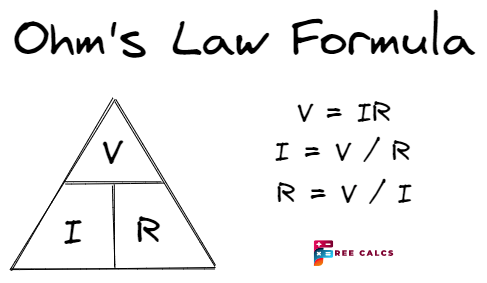Ohms Law Calculators
Ohms law (V = IR) describes the relationship between voltage, current and resistance in electrical circuits. Ohms law describes that the current flowing through an electrical circuit is directly proportional to the voltage applied between points on the circuit.
Use one of the free online calculators below to explore Ohm's Law and help you complete your physics or engineering homework correctly.
Online Ohm's Law calculators
Who discovered Ohm's Law?
The German physicist and mathematician Georg Simon Ohm invented Ohm's law. Ohm published the formula in his 1827 book The Galvanic Circuit Investigated Mathematically (Die galvanische Kette, mathematisch bearbeitet) which described Ohms's law.
Why is Ohm's Law Important?
Ohm's law is important to help understand and calculate the relationships between voltage, current and resistance in circuits. We can use Ohm's law to calculate the final property if we know two of these properties. The law describes the linear relationship between these properties that holds true in all electrical circuits.
How do you calculate Ohm's Law?
Ohm's law takes the equation form of V = IR where voltage = current * resistance. This relationship states that the electric current in a circuit is directly proportional to the voltage applied to the same circuit. For example, we can use this law to deduce that one amp of current will be pushed through a circuit with one ohm or resistance when you apply one volt to the circuit.
When was Ohm's Law Discovered?
The Ohm's Law theory was first published in May of 1827.
What is Ohm's Law Definition?
Ohm's law states that an electric current is proportional to voltage and inversely proportional to resistance.
Ohm's Law Formula Example
The below graphic summarizes the relationship and gives examples of the three equations involved in Ohm's Law. The triangle seen below is sometimes the Ohm's law magic triangle and can be a useful trick to help you remember this formula. 
Does Ohm's Law ever not apply?
Contradictory to being a Law, Ohm's Law does not always apply to cases such as Non–Ohmic Conductors. Non-Ohmeic conductors, such as semiconductors (silicon or germanium), fail to obey Ohm's law. Furthermore, devices such as diodes, triodes and vacuum tubes fail to follow Ohm's law and can be known as Non-ohmic circuits.